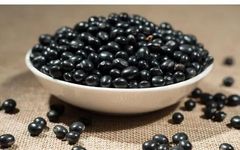Introduction to the Herb
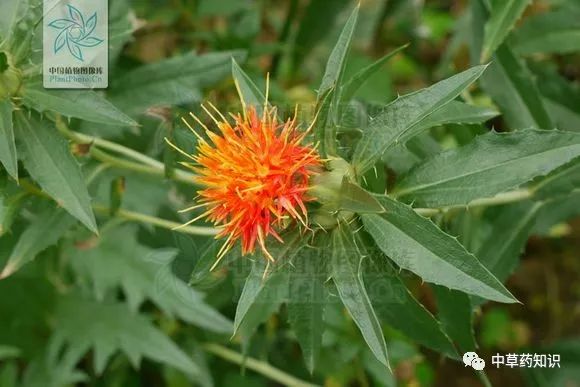
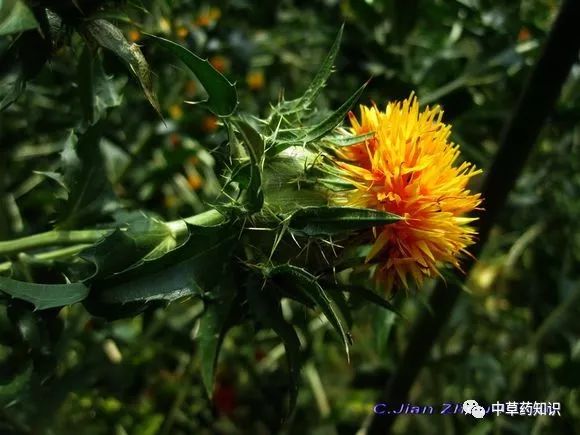
Image source: Knowledge of Chinese Herbal Medicine
Safflower (scientific name: Carthamus tinctorius L., also known as Honghua), belongs to the Asteraceae family. This plant is native to Central Asia and is cultivated in China, the former Soviet Union, Japan, and Korea.The safflower stem is erect, branched at the top, with the entire stem and branches being white or pale white, smooth, and hairless; the middle and lower leaves are lanceolate, oblanceolate, or long oval, with margins that can be coarsely serrated, finely serrated, or entire; the flower heads are numerous, with small flowers that are red or orange-red, all bisexual, and the achenes are obovate and milky white, flowering and fruiting from May to August. It prefers warm, dry climates, is cold-resistant, drought-tolerant, and thrives in well-drained, moderately fertile sandy soils.
Characteristics of the Herb
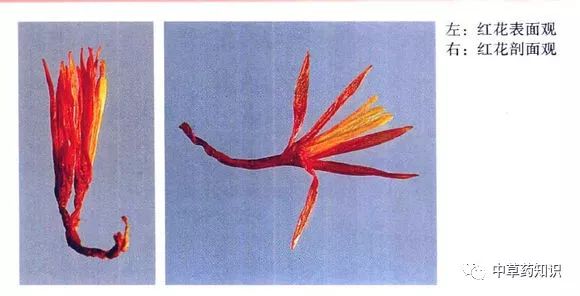
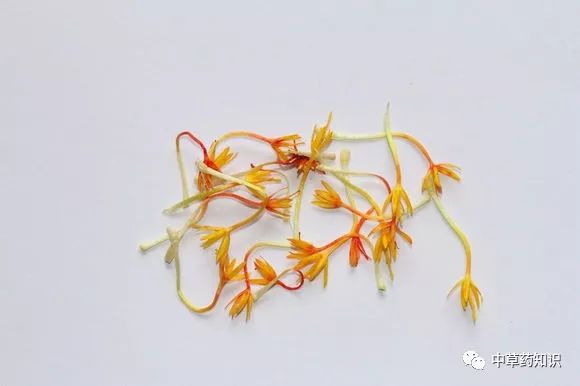
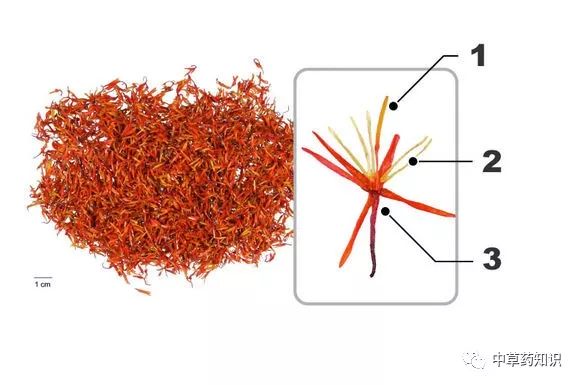
This product consists of tubular flowers without ovaries, measuring 1-2 cm in length. The surface is reddish-yellow or red. The corolla tube is elongated, with five lobes at the tip, and the lobes are narrow and 5-8 mm long; there are five stamens, with the anthers fused into a tubular structure, yellowish-white; the stigma is long cylindrical with a slightly bifurcated tip. The texture is soft. It has a faint fragrance and a slightly bitter taste.【Comparison of Safflower and Crocus Sativus】Crocus sativus, also known as saffron, although similar in name and appearance to safflower and both having the effect of invigorating blood and dispersing stasis, there are significant differences between the two. In many respects, safflower cannot replace saffron, nor can safflower be used in double doses as a substitute for saffron.
Firstly, regarding origin, saffron is native to Greece, Asia Minor, and Persia, belonging to the Iridaceae family, while safflower is primarily produced in Xinjiang and belongs to the Asteraceae family. Secondly, in terms of efficacy, safflower’s effects include invigorating blood circulation and alleviating pain, while saffron has a broader range of effects and is more effective, including invigorating blood, cooling blood, detoxifying, and calming the mind. Lastly, in terms of price, saffron generally costs several tens of yuan per gram in the market, while safflower costs several tens of yuan per pound.
Daily Applications
【Safflower and Mugwort Foot Soak】
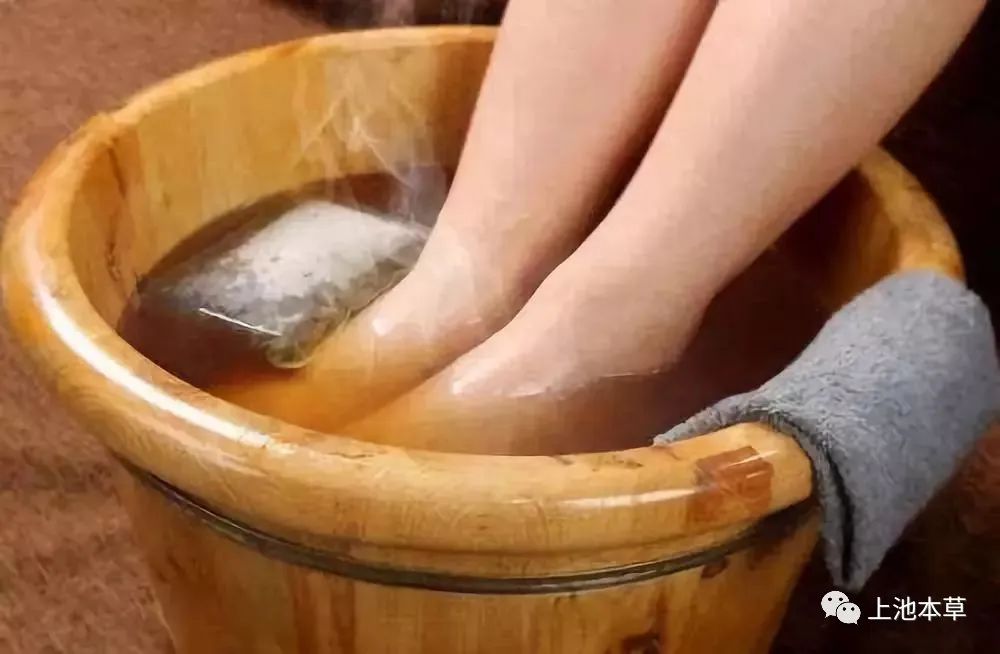
Take 100g of safflower and 500g of mugwort, divide into 20 portions, using one portion daily (add 100g of vinegar, 20 peppercorns, and 2 tablespoons of salt), wrap in gauze, boil in water, and soak feet in the hot solution for 15-20 minutes, ensuring the water level reaches the ankles. This method can remove old skin, calluses, frostbite, cracks, onychomycosis, athlete’s foot, and stubborn corns, while also making the skin of the feet smooth and delicate. Additionally, since the feet are considered the second heart of the human body, it can also promote circulation, invigorate blood, and disperse stasis.
【Black Bean and Safflower Drink】
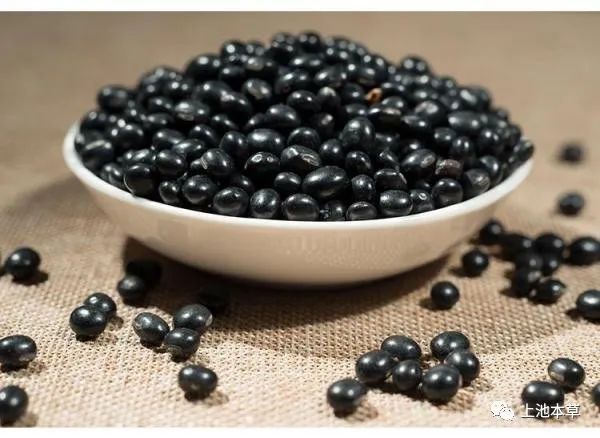
Ingredients: 15g black beans, 10g safflower.
Preparation: Place black beans and safflower in a pot, add an appropriate amount of water, bring to a boil over high heat, then simmer until the black beans are soft. Remove the black beans and safflower, keeping the broth, and add brown sugar, stirring well while hot. Take twice daily, one cup each time.
Efficacy: Black beans promote kidney function and nourish yin blood; safflower invigorates blood circulation and alleviates menstrual pain, dispelling stasis and relieving pain. Together, they promote blood circulation and dispel stasis, suitable for menstrual pain caused by blood stasis in the body.
Product Information
【Standards】Chinese Pharmacopoeia 2020 Edition, Volume 1
【Properties and Channels】Pungent, warm. Enters the Heart and Liver meridians.
【Functions and Indications】Invigorates blood circulation, dispels stasis, and alleviates pain. Used for amenorrhea, dysmenorrhea, retained lochia, abdominal masses, chest pain, stasis abdominal pain, stabbing pain in the chest and hypochondrium, trauma, and swelling and pain from sores.
【Specification】5g/bag
【Shelf Life】Three years
【Dosage and Administration】3-10g.
【Precautions】Use with caution in pregnant women.
【Storage】Store in a cool, dry place, protect from moisture and pests.
【Manufacturer】: Hebei Shangchi Herbal Medicine Co., Ltd.
【Address】: 868 Dong’an Jiao Highway, Donghe Village, Anguo City, Baoding, Hebei Province
【Sales Phone】: 13241025193/13910533459 Manager Chi
【Content Source】: China Traditional Chinese Medicine Network & Chinese Pharmacopoeia

